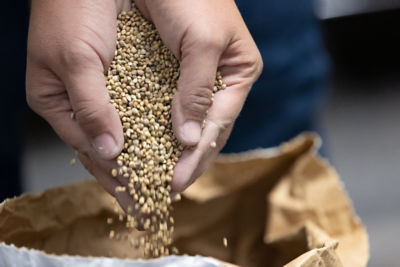Causal Agent
Pseudomonas syringae. pv. maculicola
Distribution
Worldwide
Symptoms
The disease occurs mainly on cauliflower, though broccoli, cabbage, Brussels sprouts and turnips can also be affected. Symptoms consist of leaf spots that begin as small, watersoaked pinpoint lesions. Later, these lesions become dark brown or purple with translucent haloes. Individual spots are slightly sunken and up to 3 mm (1/8 in.) in size. Often, spots will coalesce to form an irregular angular lesion, giving a puckered, ragged appearance to the leaf. With severely affected plants, leaves may become chlorotic and senesce. The bacterium causes small, gray-to-brown spots on the cauliflower curd, which can affect both surface and underlying tissues. Peppery spot symptoms may also occur on stems, petioles and seed pods.


Conditions for Development
This bacterium can survive in soil and in crop debris for at least one year. The organism can also be seedborne. It is spread by splashing rain or irrigation water. Insects may also spread this disease. Bacterial leaf spot is most severe during cool, wet weather.
Control
Use seed free of Pseudomonas syringae pv. maculicola and sow into seed beds free from the organism. If the disease occurred previously in the seed bed, the soil should be sterilized before planting. Rotate to a non-host seed bed for at least one year following a cruciferous crop.



